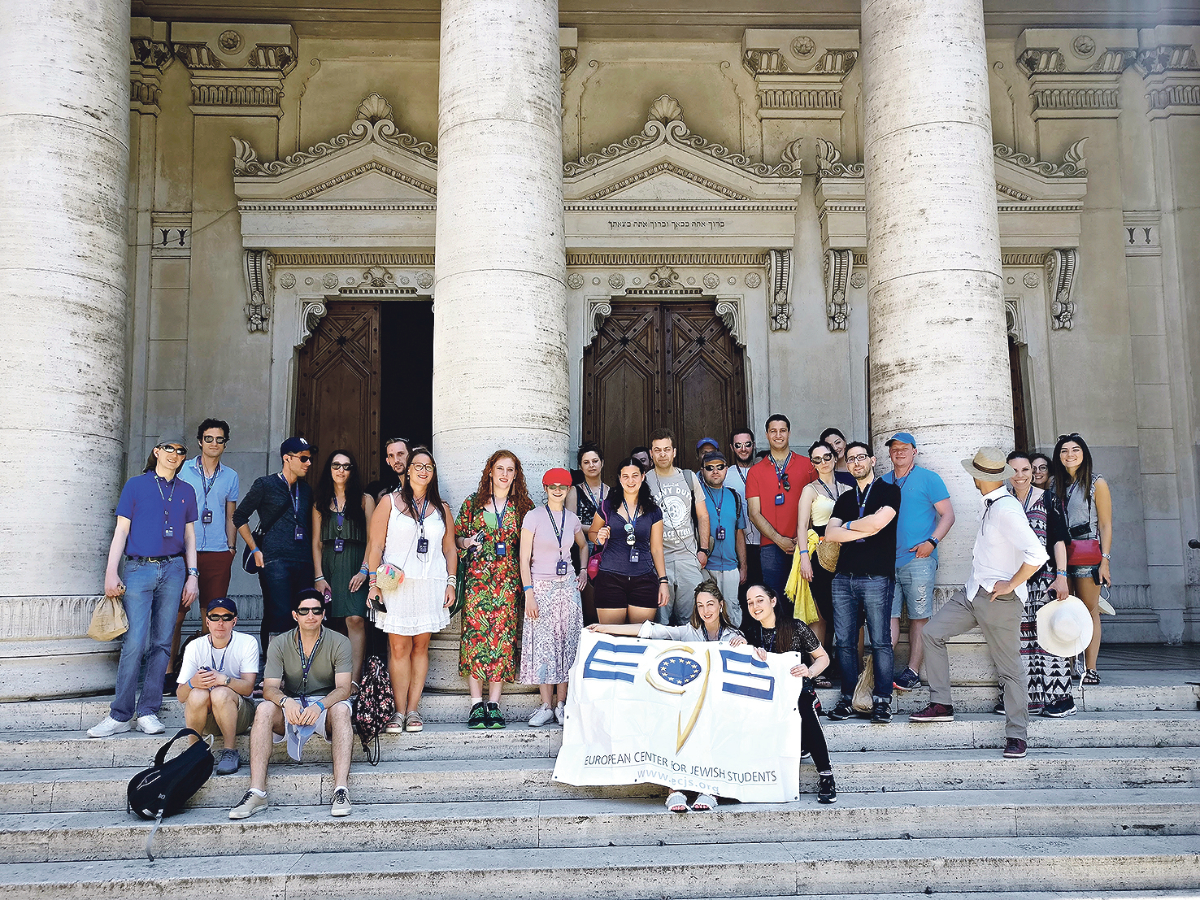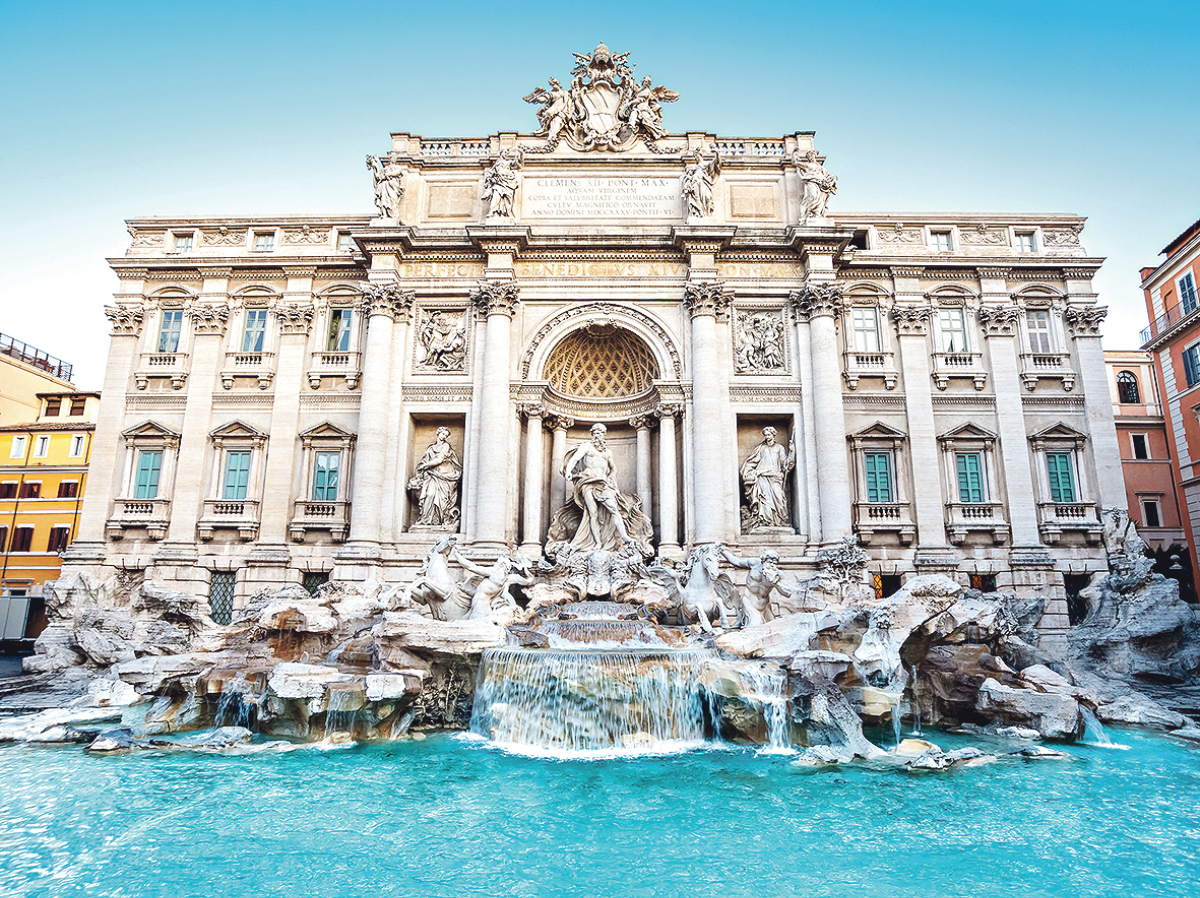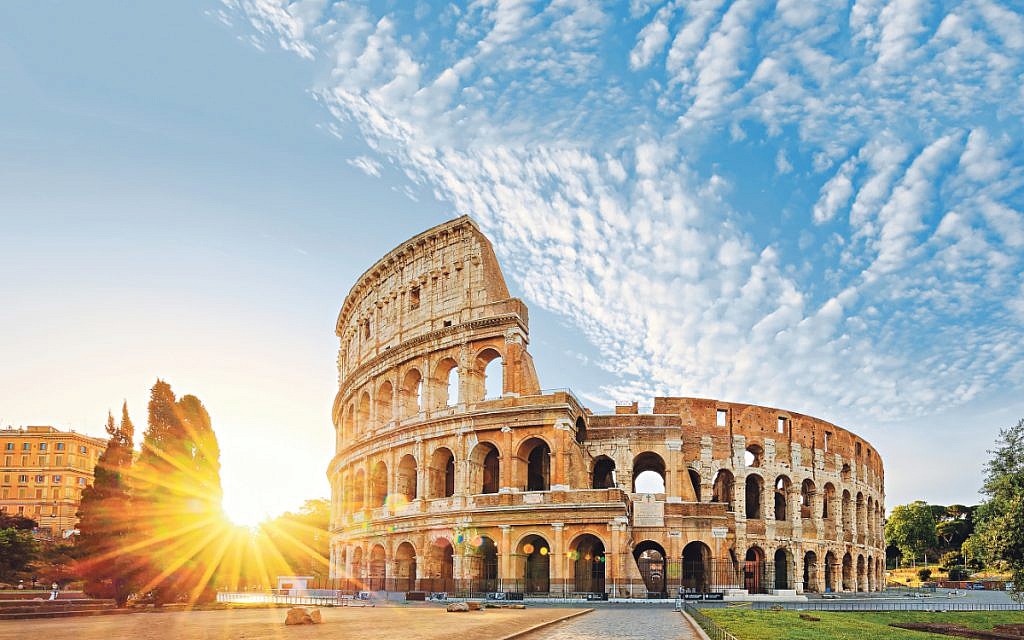Rome Sweet Rome!
James Martin explores the ancient origins of the Eternal City and steps into the Italian capital’s Jewish history
It’s known as the Eternal City – and while Jews certainly haven’t been there since time began, Italy’s capital has hosted the community for an astounding 22 centuries, ever since the First Temple was destroyed.
That was just one of the fascinating facts to emerge on a five-day trip to Rome organised by ECJS (European Centre for Jewish Students).
Our first stop in this city steeped in ancient Jewish heritage was the Great Synagogue, the first Italian synagogue built after unification in 1870. It is a stunning example of the European ‘cathedral’ shuls, the baroque-style marble interior and wooden seats transporting you immediately back to a different era.
Get The Jewish News Daily Edition by email and never miss our top stories Free Sign Up
Our local guide then took us to the adjacent Spanish Synagogue, a Moorish-style small building with beautiful architectural details dating back to the 16th century.
The nearby Jewish Museum of Rome (Museo Ebraico di Roma) contains an extensive selection of Judaica, including items from the Middle Ages and Renaissance era, as well as an exhaustive history of the city’s Jewish Ghetto.
Although never forced to convert, the Jews were obligated to attend church services in order to “persuade” them to do so.
A visit to the Ghetto, where the Jews lived until the city was freed from the Papacy, is a real treat, with a dozen kosher eateries, including meat, milk, and café houses. I ate in Ba’Ghetto’s dairy restaurant, which also runs an adjacent meat restaurant.
The fried zucchini, Roman artichoke and penne arrabiata were cooked to perfection and went down well – as did the Chianti.
Our second day was spent enjoying a tour of the ancient city, a whistle-stop journey through layers of antiquity starting in the period that lent Rome its name.
We learnt about the Jewish presence in the city for more than 2,000 years – which makes it one of the oldest continuous communities in the world – saw the ruins of an ancient apartment building and visited the Roman Forum, once the centre of Roman life and the meeting place of the senate.

We strolled across the Via Sacra, the main thoroughfare of Rome, passing the Palatine Hill, until we reached the Arch of Titus, the south panel depicting the spoils of war taken from the Temple in Jerusalem.
We ended our journey through the Arch of Constantine and found ourselves standing at the site of the world-renowned Colosseum, where many a Roman citizen was entertained by gruesome gladiatorial combat.
After a relaxing Shabbat spent at the Sheraton Roma, an impressive hotel located six miles from the city, we continued our journey through history in earnest.
A city-centre tour included the Piazza Venezia, the central hub, the bustling Piazza Navona and the fountain of the four rivers, which represents the four continents through which papal authority has spread: the Nile in Africa, the Danube in Europe, the Ganges in Asia and the Río de la Plata in the Americas.
Not for the faint-hearted, the monumental Spanish Steps – 135 in total – connect the Piazza di Spagna at the base and Piazza Trinità dei Monti at the top, while a visit to Rome wouldn’t be complete without seeing the beautiful Trevi Fountain, where an estimated €3,000 (£2,720) a day are thrown in by people wishing for good luck.

The best, however, was saved for last, with my final day spent visiting the Vatican. The group tour is a must and saves on long waits at the entrance as tens of thousands of visitors come here every day.
By taking the tour, you will find yourself proceeding quickly through the buildings. Don’t forget the audio guide, essential in order to absorb the surroundings.
The Vatican Museum contains an impressive art collection built up over centuries, including classical sculptures and masterpieces of Renaissance art, while the breathtaking Sistine Chapel ceiling, painted by Michelangelo, is worth the entrance fee alone. The variety of biblical, mythical and allegorical images makes it a staggering narrative of creation and thought.
St Peter’s Basilica was the final point on the journey. Aside from being a renowned work of Renaissance architecture, at 720 ft long and 490 ft wide, it is also easily the largest church in the world and it is from this impressive place that the Pope appears to thousands-strong crowds throughout the year.
Travel Tips
James Martin stayed at the Sheraton Roma Hotel (sheratonrome.com), where prices start from €71 (about £63) per night. He toured Rome with ECJS (ecjs.org) and visited the Jewish Museum of Rome (museoebraico.roma.it/en/the-museum).

Thank you for helping to make Jewish News the leading source of news and opinion for the UK Jewish community. Today we're asking for your invaluable help to continue putting our community first in everything we do.
For as little as £5 a month you can help sustain the vital work we do in celebrating and standing up for Jewish life in Britain.
Jewish News holds our community together and keeps us connected. Like a synagogue, it’s where people turn to feel part of something bigger. It also proudly shows the rest of Britain the vibrancy and rich culture of modern Jewish life.
You can make a quick and easy one-off or monthly contribution of £5, £10, £20 or any other sum you’re comfortable with.
100% of your donation will help us continue celebrating our community, in all its dynamic diversity...
Engaging
Being a community platform means so much more than producing a newspaper and website. One of our proudest roles is media partnering with our invaluable charities to amplify the outstanding work they do to help us all.
Celebrating
There’s no shortage of oys in the world but Jewish News takes every opportunity to celebrate the joys too, through projects like Night of Heroes, 40 Under 40 and other compelling countdowns that make the community kvell with pride.
Pioneering
In the first collaboration between media outlets from different faiths, Jewish News worked with British Muslim TV and Church Times to produce a list of young activists leading the way on interfaith understanding.
Campaigning
Royal Mail issued a stamp honouring Holocaust hero Sir Nicholas Winton after a Jewish News campaign attracted more than 100,000 backers. Jewish Newsalso produces special editions of the paper highlighting pressing issues including mental health and Holocaust remembrance.
Easy access
In an age when news is readily accessible, Jewish News provides high-quality content free online and offline, removing any financial barriers to connecting people.
Voice of our community to wider society
The Jewish News team regularly appears on TV, radio and on the pages of the national press to comment on stories about the Jewish community. Easy access to the paper on the streets of London also means Jewish News provides an invaluable window into the community for the country at large.
We hope you agree all this is worth preserving.
- James Martin
- Travel
- Features
- Italy
- Rome
- European Centre for Jewish Students
- ECJS (European Centre for Jewish Students)
- Jewish Museum of Rome (Museo Ebraico di Roma)
- Middle Ages
- Renaissance era
- Jewish ghetto
- Ba’Ghetto
- Roman Forum
- Italian Jews
- Italian Jewry
- Arch of Constantine
- arch of titus
- Sheraton Roma Hotel
-
By Brigit Grant
-
By Laurent Vaughan - Senior Associate (Bishop & Sewell Solicitors)
-
By Laurent Vaughan - Senior Associate (Bishop & Sewell Solicitors)
-
By Laurent Vaughan - Senior Associate (Bishop & Sewell Solicitors)
-
By Laurent Vaughan - Senior Associate (Bishop & Sewell Solicitors)






















